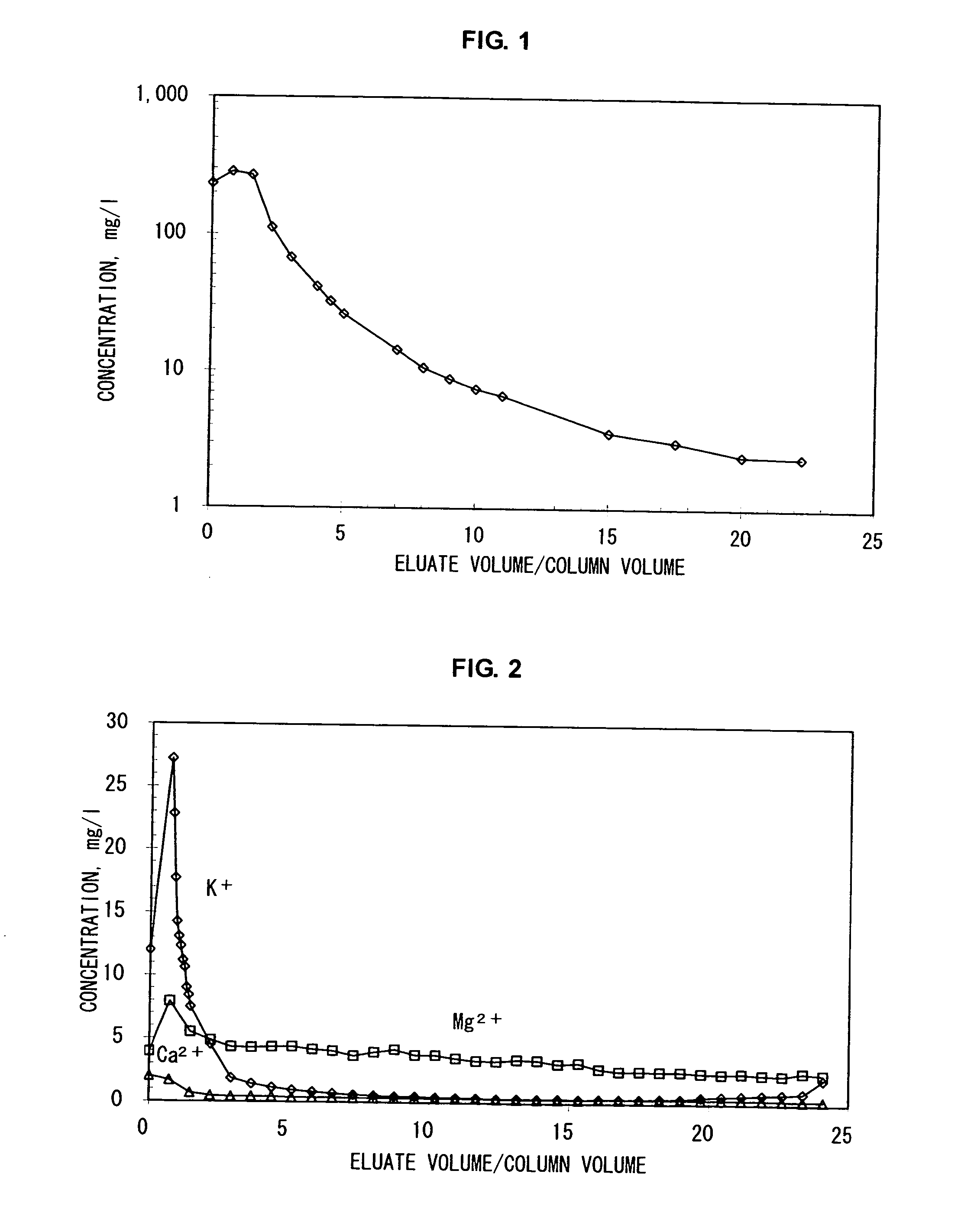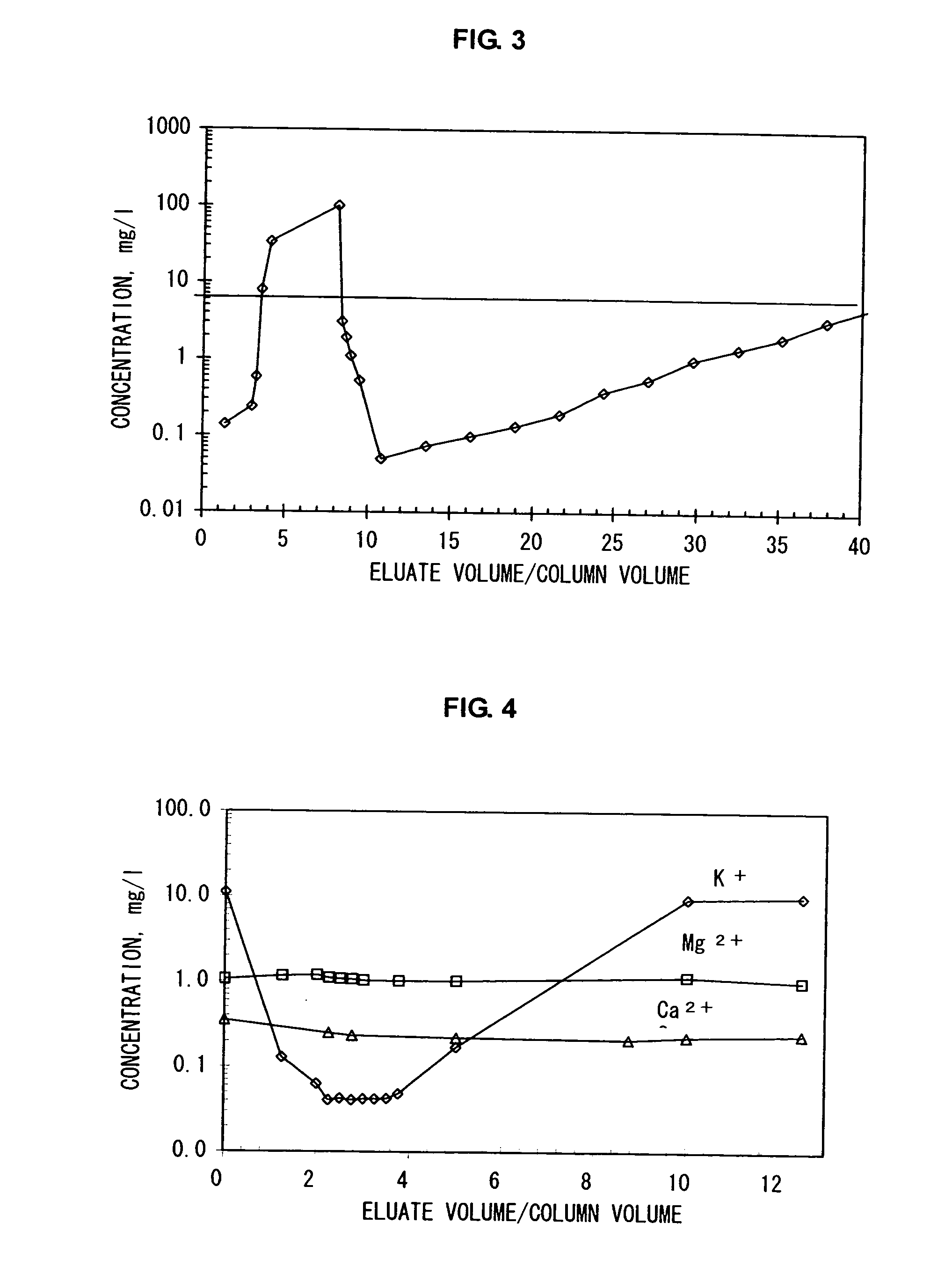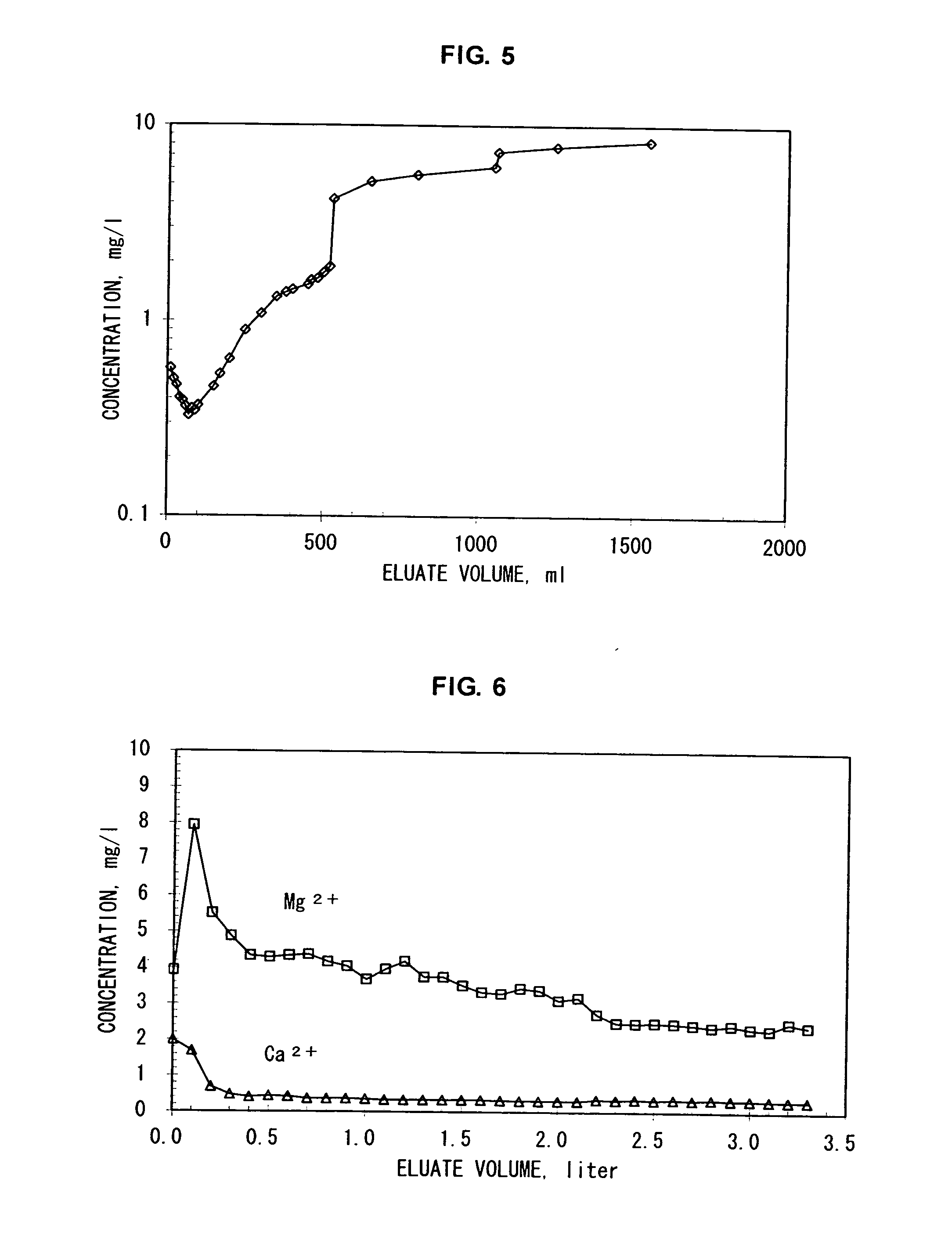Method of reducing impurity content in aqueous salt solution
a technology of aqueous salt and impurity content, which is applied in the direction of drug composition, separation process, metabolic disorder, etc., can solve the problem of difficult matter to separate impurities from the principal component, theoretic limitation of an improvement in this selection coefficient, and the inability to achieve the purification effect of purified products
- Summary
- Abstract
- Description
- Claims
- Application Information
AI Technical Summary
Benefits of technology
Problems solved by technology
Method used
Image
Examples
example 1
[0105] By using an apparatus system having a liquid-feeder pump, an adsorbent column and a fraction collector, potassium ions were separated from a 1 M aqueous sodium chloride solution containing, as impurities, 13 mg / l of potassium ions, 4 mg / l of magnesium ions and 2 mg / l of calcium ions.
[0106] A glass-made column (inner diameter: about 10 mm, height: 500 mm) was filled with, as an adsorbent, an ammonium ion-type natural zeolite (trade name: “Sun Zeolite”, manufactured by Sun Zeolite Co., clinoptilolite, average particle diameter: 0.5 mm) to which about 5 μmol / g of potassium ions were adsorbed, up to a height of 470 mm, and the aforementioned aqueous sodium chloride solution was passed therethrough at a flow rate of 0.1 ml / min. in a thermostatted chamber (27° C.). The eluate from the column at this time was fractionally collected in 2-ml portions and the concentration of potassium ions in each fraction was analyzed quantitatively. An elution curve for the potassium ion concentrat...
example 2
[0108] By using an apparatus system having a liquid-feeder pump, an adsorbent column and a fraction collector, impurities were separated from a 1 M aqueous sodium chloride solution containing, as impurities, 13 mg / l of potassium ions, 4 mg / l of magnesium ions and 2 mg / l of calcium ions.
[0109] A glass-made column (inner diameter: 50 mm, height: 200 mm) was filled with, as an adsorbent, a H+ type natural zeolite (trade name: “Sun Zeolite”, manufactured by Sun Zeolite Co., clinoptilolite, average particle diameter: 0.5 mm) to which about 7 μmol / g of potassium ions were adsorbed, up to a height of 70 mm, and the aforementioned aqueous sodium chloride solution was passed therethrough at a flow rate of 1 ml / min. at 50° C.
[0110] Then, the eluate from the column was fractionally collected in 2-ml portions and each of the concentrations of potassium ions, magnesium ions and calcium ions in each fraction was analyzed quantitatively. The results are shown as a graph in FIG. 2.
[0111] In this...
example 3
[0112] Using an apparatus system having a liquid-feeder pump, an adsorbent column and a fraction collector, potassium ions were separated from an aqueous 1M-sodium chloride solution containing, as impurities, 13 mg / l of potassium ions, 4.5 mg / l of magnesium ions and 3.5 mg / l of calcium ions.
[0113] A glass-made column (inner diameter: 10 mm, height: 500 mm) was filled with, as an adsorbent, an ammonium ion-type natural zeolite (trade name: “Sun Zeolite”, manufactured by Sun Zeolite Co., clinoptilolite, average particle diameter: 0.5 mm) to which about 5 μmol / g of potassium ions was adsorbed, up to a height of 470 mm, and the aforementioned aqueous sodium chloride solution was passed therethrough at a linear flow rate of 30 cm / hr in a thermostatted chamber (27° C.). The relationship between the ratio of the volume of the eluate from the column to the volume of the column and the concentration of potassium ions (mg / l) in the eluate at this time was obtained. The concentration-elution ...
PUM
 Login to View More
Login to View More Abstract
Description
Claims
Application Information
 Login to View More
Login to View More - R&D
- Intellectual Property
- Life Sciences
- Materials
- Tech Scout
- Unparalleled Data Quality
- Higher Quality Content
- 60% Fewer Hallucinations
Browse by: Latest US Patents, China's latest patents, Technical Efficacy Thesaurus, Application Domain, Technology Topic, Popular Technical Reports.
© 2025 PatSnap. All rights reserved.Legal|Privacy policy|Modern Slavery Act Transparency Statement|Sitemap|About US| Contact US: help@patsnap.com



